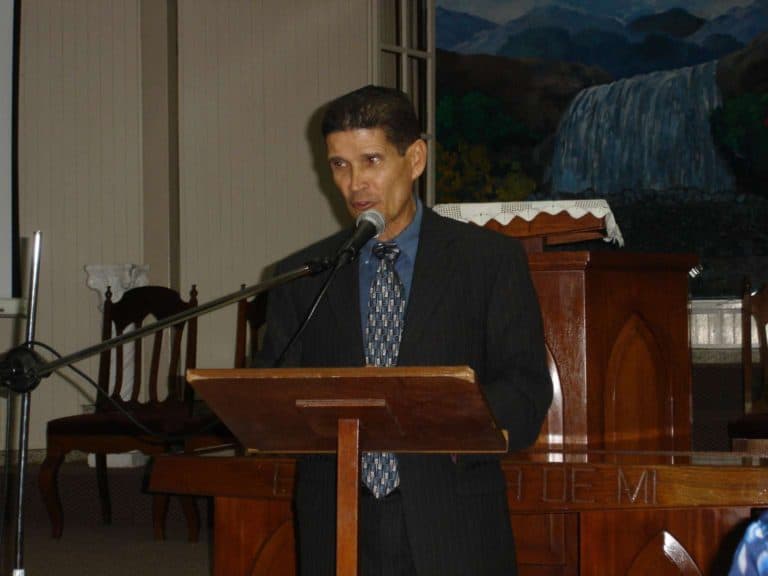19+ Public Speaking Techniques and Skills (#18 is Gold)
The art of public speaking has become one of the most sought-after skills in the 21st century. There was indeed a time when oratory skills were exclusive only to political pundits and social critics, but for the better 21st century, this skill will be a requisite tool for the big business.
What are public speaking techniques?
Public speaking techniques are a set of skills and techniques used to ensure proper speech planning, preparation, rehearsal, and engaging delivery to the audience.
If you are wondering about what are the public speaking techniques that will help you prepare and deliver a remarkable presentation, please find a list below:
- Knowing Your Subject Matter
- Taking Notes
- Practicing
- Rehearsing in front of a Small Group
- Learning from Experts in the Field
- Conducting an Audience Analysis before the Speech
- Studying the Venue
- Relaxation Techniques
- Throwing Interesting Questions
- Making the Audience Root for You
- Exuding Confidence
- Using Gestures and Effective Body Language
- Props & Visual Aids
- Convincing the Audience
- Adding Humor
- Memorize Key Points
- Dress the Part
- Pause and Pace Yourself
- Manage Time
- END your Speech in a Great Note
Some of these speaking skills are quite easy to master, and if you can be patient enough to follow the right approach, you can be on the fast path to delivering the best public speeches that will dazzle your audience. Below are the top 20 public speaking techniques everyone should master.
20 PUBLIC SPEAKING TECHNIQUES & SKILLS EVERYONE SHOULD MASTER
David JP Phillips, dedicated 7 years to studying over 5000 public speakers and their techniques in order to realize what communication and public speaking skills are used and the effects of such skills. He shared the results of 110 communication and public speaking techniques in a TED Talk, you may find the video on youtube, or just sit tight and watch it right here. Check below:
Moving on, here’s the details of the 20 public speaking techniques we selected for you.
1. Know Your Subject Matter (Do your Research)
Before setting out to giving a public speech, be sure to conduct more than enough research in order to have a full grasp on the topic of choice. Having a thorough understanding of the topic will you give you a hands-on approach to communicating the message to your audience.
When you have in-depth knowledge on what you want to talk about, putting them in points will be much more comfortable, and thus, delivering a sound lecture would be a walkover once you overcome your stage fright and use those essential skills you have picked up. You should not forget this part.
2. Always Take Down Notes
In the earlier point above, we talked about knowing your subject matter. Now, you might want to briefly outline some key points on which you will be basing your speech off of. Listing out your points in the right order is not for remembrance purposes only, but helps you stay focused and not appear to be reading the entire thing off a script.
3. Practice Effectively
One important way to prepare for a great speech is by practice.
- You can do this within the confines of your room when no one is watching.
- Be sure to look the part by even dressing up like you were about to deliver the actual speech.
- Stand in front of a mirror, or record yourself while making the speech to see how you are performing.
These dramatic instances are the little things that will eventually count on the day of the speech as you would have rehearsed and ingrained every single detail so much that you can almost do out of your sleep.
4. Rehearse Before A Small Group
After you are done with your private rehearsal, you can proceed to rehearse before a small audience of people who are willing to give you constructive criticism. Indeed, this exercise will provide you with great feedback and ultimately help you to clean out the minor glitches here there and polishing your public speaking techniques and delivery skills.
5. Study Experts In The Field
One of the many great ways to master proper public speaking techniques is by studying great public speakers.
A decade or two ago of years, it would have been a difficult feat as it would require you to attend public speaking events or functions, but it is quite different today with rich resource of public speaking videos available online. You can find an endless stream of them on YouTube.
Spend a significant amount of time, consuming and digesting every single one of them, study the speakers’ approach, their opening style down to the climax of speech. Make sure to ingrain every single detail you pick up as this would form the basis for improving your public speaking skills and technique.
6. Know Your Peculiar Audience
Now, this is another vital part to note before making a public speech. Every speech you will ever make will undoubtedly be targeted to a class of people. Having this basic understanding will help you structure your presentation to suit a particular audience.
Organize your point logically while employing great metaphors and figures of speech. Lastly, who does not love a great story? Using a great story to drive home your point not only entertains your audience but makes the entire speech more memorable.
If you are curious, please check out this article to know more about how to conduct an audience analysis before the big day, and also this article to understand how to become a good storyteller.
7. Study Your Venue
Studying the venue where you intend to give your speech is also essential. Before the day of the speech, it is advisable to take a tour around the hall to have a feel as this will prep you up psychologically. You can even decide to take a practice run right there on the stage just for the sake of it.
8. Learn To Relax
There is almost no one who does not feel anxious or nervous when making a public speech. However, the difference lies in the ability to control that anxiety and making it invisible to the audience.
Before taking to the stage, always take a deep breath to calm the nerves before proceeding with your speech. You can even smile a little to appear enthusiastic; this will help take the edge off.
9. Throw An Interesting Question
The first thing an audience always watch out for is the first one minute of your speech. This will tell if they should continue to pay attention to you or somewhat zone out. Therefore the first one or two minutes is very crucial to making a lasting impression on your audience.
One way to hold down the attention of your audience is to throw them an interesting question or fact. This will act as a brain teaser as their interest will be immediately propped up.
This intriguing question will henceforth form the theme around what you will be speaking about for the rest of the presentation. Asking questions also helps credit the notion that you are an expert in your field and not just a public speaker.
10. Your Audience Is Rooting For You!
You need to realize that your audience is always on your side. Almost no kind of audience is looking towards the speaker failing at his performance; after all, they did not all leave their houses to go waste their time at a failed event.
Every audience always expects a stellar performance, as such, they are subconsciously your friends already even before you make your way up the stage.
11. Appear Confident (Do Not Apologize For Being Nervous)
Being nervous might sometimes force speakers to apologize to their audience, almost like making atonement for their sins, sort of. This is a completely wrong move.
Apologizing for being nervous puts you in a defensive position which makes you appear weak and without conviction of your worth, not even to add that this information adds nothing of value to your audience, nor does it help your nervousness in any way.
Instead of apologizing, trying working subtly through the nervousness and appearing as though nothing is happening, regardless of whether the audience notices or not. 100% of the time, speakers are known to ease up after a while of presenting, which evens out the tension eventually.
“Fake until you make it.” Appear confident, until your nervousness naturally goes away.
12. Use Gestures and Effective Body Language
Do not shy away from using hand gestures to drive home your point. A moderate use of gestures not only helps you communicate better; they also make you appear confident, gives a great poise, and sets you apart.
Learning and mastering the art of reading and emitting the right message with your body language and gestures is key in ensuring that your audience trusts you. It is one of the most critical public speaking techniques you can master.
Related Article: Understanding Body Language – 5 Great Tips for More Effective Presentations
13. Apply Visual Presentations
Visual presentations like PowerPoint slide presentations add a special touch to your public addresses. That is like the proverbial icing on the cake! A visual representation will help explain the topic at hand better as the brain processes pictorial depictions easier, which will consequently keep your audience glued to you.
Depending on the type of speech, PowerPoint presentations might just be your best tool for the job, for example in demonstrative speeches, or informative speeches where you have to demonstrate/prove your facts with charts, tables, statistical data, and so forth.
14. Convince Your Audience
The key to giving a resounding speech is to first believe in what you are speaking about. You should speak in such a reassuring way that carries firm conviction on the subject.
An audience can immediately read a poorly conceived idea, and when this happens, the credibility of your presentation will automatically be in question. So always research your idea or topic and believe in it so much that convincing the audience becomes easy.
Without believing in your self, and in what you are presenting no one else is going to believe in you.

15. Add Humor To Engage Your Audience
Knowing how to incorporate humor into your speeches is very crucial. Also learning the best time to inject some comedic relief into your presentation with spontaneity to the greatest effect is equally important.
Occasional humor adds wittiness and levity to your speech and will engage your audience all the more.
16. Memorize Key Points (Do not Read from a Script)
Most first-time public speakers always make the mistake of reading off their notes when making their speeches. While making up a small point is necessary as we earlier stated in this article, reading them out to the audience will make you look like an amateur.
Instead of looking down at your note every five seconds, try to store up as many points as possible in your head from time to time, so that you appear to speak with experience. You communicate better and naturally when you learn to speak from the heart.
17. Dress The Part
As the saying goes, “you are addressed as you are dressed,” your dressing counts to the overall success or failure of your public speech. Your picking out the right type of dress will be entirely dependant on the kind of audience you want to address.
Choosing to dress formally or informally will also depend on the topic of discussion and the particular weather and time in the season.
18. Pause In Your Speech
You can take your public speaking techniques and skills to a dramatic twist by adding silence to your presentation. Please do not shy away from it at all, as this will add some suspense to your presentation.
I believe that pause is one of the most critical, yet subtle, public speaking techniques; many people underestimate its value. A short period of quietness will awaken your audience and keep them at the edge of their seats, expecting what will happen next.
19. Work With Time (Remember Practicing and Rehearsing)
Learn always to obey time constraints. Regardless of how short the time for your presentation, respect it. Two minutes is two minutes, work within its constraints.
Try to summarize your presentation in such a way that it fits the specific time slot allocated. This way, you respect the organizers and respect your audience in particular.
20. Have A Great Ending
Crowning up your presentation with a solid ending is a very important public speaking technique. Many times, speakers don’t know how to do this. They just mumble something of no real consequence before leaving the stage.
Instead of making a blunder of your closing remarks, always have something planned out. A great way to end your public presentation is a call-to-action like asking them to buy a product or pointing them towards a web address to subscribe for a service, before eventually taking your leave.
If you are curious for additional ideas on how to end your presentation with a bang, please check out this article, I am sure you will find it insightful.
Before closing the article, let me add below some of the top related and interesting articles that can add to what you’re learning from this one. If any of the titles picks your interest, please click and open in a new tab, so you can check them out later. Enjoy!
-
8 THINGS YOU CAN DO TO ACE ANY JOB INTERVIEW

The happiness when receiving a call marking the job interview gives rise to endless anxiety. After all, it’s only a few minutes to prove your worth, impress the recruiter and seize the opportunity. However, to do well at the job interview, you need to think about what you will say, how you will present yourself,…
-
An Easy Guide to All 15 Types of Speech

We keep learning that there are three types of speeches, informative speeches, persuasive speeches and special occasion speeches. However, I believe and know that there are many more such as debates, motivational speeches, forensic speeches, impromptu speeches, eulogy, and so on. Here’s a growing list of over 13 types of speech and tips on how…
CONCLUSION
Just like we saw in the introduction, public speaking has become one of the most sought-after skills in the 21st century. Moreover, it is fast becoming a requirement in many formal to informal settings.
You almost can not go through a corporate environment today and not be required to deliver a presentation at one point or the other. It is a requisite skill that has come to stay regardless of whether you enjoy it or not.
We could have discussed more public speaking techniques such as how to control your voice tone, or pitch, how to tell great stories, anecdotes, or how to write killer speeches, or how to outline your speech, and so on. We will be adding those in the future, but I am sure these 20 public speaking techniques will suffice for now.
As such, by understanding and applying the stated public techniques above, you too can equally be on the fast track to becoming very proficient in the art of public speaking.
REFERENCES & FURTHER READING
Please find below, some of the best articles on the Web on public speaking techniques, if you really want to get more to add on to the 20 shared here, please visit them.
Laura Spencer. 15+ Effective Public Speaking Techniques. https://business.tutsplus.com/tutorials/effective-public-speaking-skills-techniques–cms-30848 .
Brian Tracy. 8 Public Speaking Techniques to Wow Your Audience. https://www.briantracy.com/blog/public-speaking/tips-to-wow-a-crowd/ .
Gary Genard. Leadership Skills: The 5 essential speaking techniques. https://www.genardmethod.com/blog/leadership-skills-the-5-essential-speaking-techniques .









